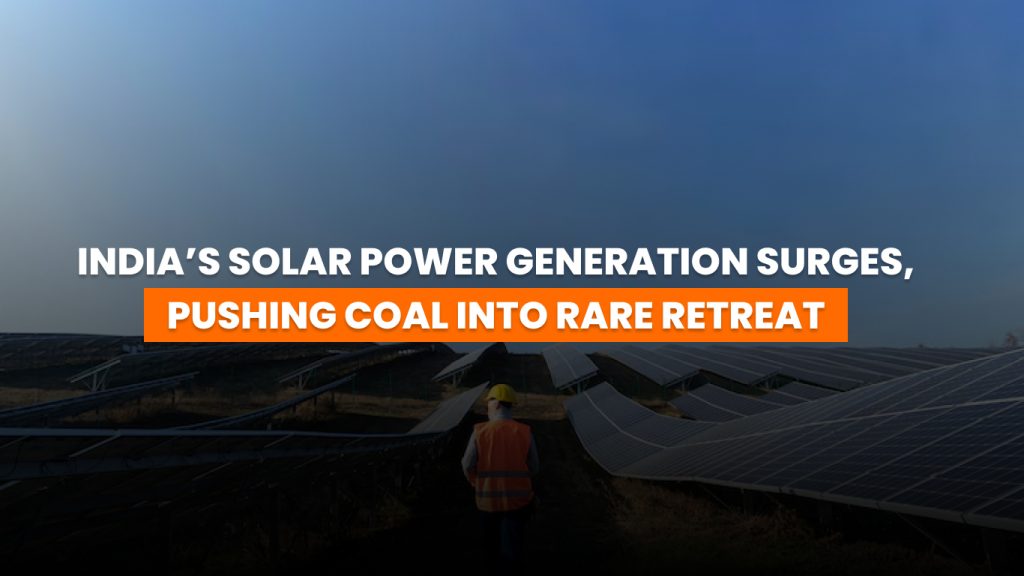India is experiencing a major shift in its electricity generation landscape as solar power surges to record highs, displacing coal-fired power in a country long reliant on fossil fuels.
From January to April 2025, solar electricity output in India rose by an impressive 32.4% compared to the same period last year, reaching 57.8 terawatt hours (TWh), according to a report by Oil Price. This marks a pivotal moment during the months when coal typically dominates the grid, suggesting that India could see its first annual decline in coal generation since the COVID-19 pandemic in 2020.
According to a report by Oil Price, the surge in renewable energy—particularly solar—has already begun to reshape India’s power mix. While coal power held steady during the early months of the year, natural gas generation plunged by 27%. In May, coal-fired power fell to its lowest level since 2020, driven by moderate temperatures and rapid additions of solar infrastructure.
India, the world’s second-largest consumer of coal, still relies on the fuel for about 70% of its electricity generation. However, the latest data points to an accelerating transition. In the 2024–2025 financial year ending March 31, India installed a record 29.52 gigawatts (GW) of renewable energy capacity, including a dramatic jump in solar installations—from 15.03 GW the previous year to 23.83 GW.
Analysts suggest that this shift may be a turning point. “India has made significant progress with the rapid adoption of renewables. But the country now faces a key challenge—ensuring its clean generation grows fast enough to meet rising demand,” said Neshwin Rodrigues, Senior Energy Analyst at Ember.
Last year, India surpassed Germany to become the third-largest generator of electricity from wind and solar combined, measured in absolute terawatt hours. Despite these gains, fossil fuels still accounted for 78% of total power generation, highlighting the long road ahead for decarbonization.
India is among a select group of ten countries committed to tripling their renewable energy capacity by 2030. Based on current plans, analysts at Ember project the country will reach 42% renewable electricity generation by the end of the decade. The government aims to achieve 500 GW of non-fossil fuel capacity within the same timeframe.
If the current momentum continues, India’s electricity sector could undergo a significant transformation—potentially reducing emissions while meeting the country’s fast-growing energy needs with cleaner alternatives.
Source: Oil Price
https://oilprice.com/Latest-Energy-News/World-News/India-Solar-Power-Generation-Surges-as-Coal-Makes-a-Rare-Retreat.html




